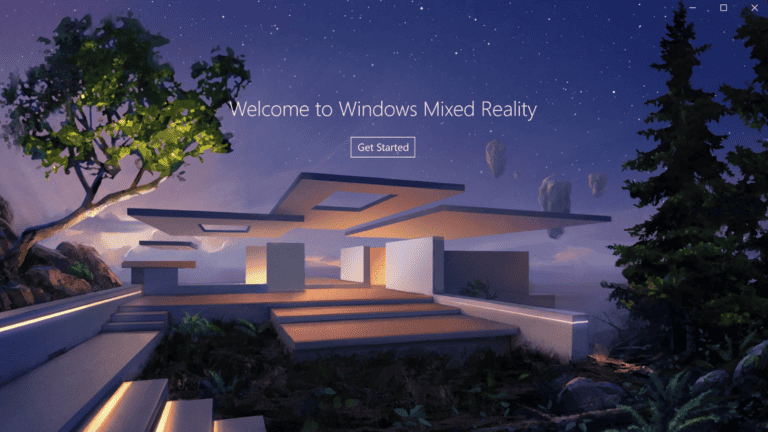Microsoft has decided to remove Windows Mixed Reality (WMR) from new releases of Windows. Few users will notice its disappearance, despite the fact that the VR solution once debuted with much fanfare.
Tucked away in Windows’ “deprecated features” list, Microsoft confirms that WMR is going away. New releases of Windows will not ship with the Mixed Reality Portal app and there will be no native compatibility with SteamVR, Valve’s ecosystem for running VR games on its Steam service.
No VR revolution, at least not with WMR
Almost a decade ago, the mixed reality revolution seemed imminent. Between 2013 and 2015, Oculus (now gobbled up by Meta) had produced two versions of its early developer-oriented virtual reality headsets for PCs. In early 2015, Microsoft seemed to be bringing in the big guns to make its VR ambitions known. It sought to combine VR and AR, whereby headsets could place virtual elements into the real world. It was also possible to set up a full virtual 3D space, something that was later mostly associated with the “metaverse” outside of VR’s video game usage. Regardless, the HoloLens impressed as it was presented alongside Windows 10.
In the two years that followed, VR on Windows took more shape, putting forward a reference design for handheld controllers that allowed users to intuitively experience the world. Windows Mixed Reality was supposed to be the platform for which OEMs like Samsung, HP, Acer and Dell could build their own hardware. However, these products largely failed to sell well, partly because of limited technology implementations. For example, WMR controllers were notorious for its disappointing tracking capabilities, resulting in an unpleasant and unstable user experience.
By contrast, while Meta and Valve came out with mature consumer products, WMR hardly had any updates. The platform’s 3D UI still betrays its origins from the early days of Windows 10. It’s therefore somewhat remarkable that Microsoft is only now putting WMR out of its misery.
VR/AR success in enterprise environments
However, Microsoft’s VR/AR glasses known as HoloLens 2 are still operational within various enterprise environments. Microsoft’s entry into this market has thus not completely flopped. One of the HoloLens’ better-known applications is that it assists aircraft maintenance personnel. Its users are then shown, for example, where components should be located or what characteristics these parts have. None of this runs on Windows Mixed Reality, by the way, as it’s Windows 10 Holographic that’s running in the background.
On the commercial front, it’s striking that Microsoft is stopping WMR for good right as VR has regained some attraction. A relaunch was highly unlikely, but the announcement of the Apple Vision Pro does breathe new life into the VR/AR world. Since its price seems somewhat similar to the professional-grade HoloLens 2, it remains to be seen whether consumers are going to be eager to snap it up. We should find out in 2024, especially once the early adopter customers have made their purchases. It seems unlikely Apple will abandon development early on like Microsoft did with WMR.
Also read: Start building your own apps for the Apple Vision Pro
